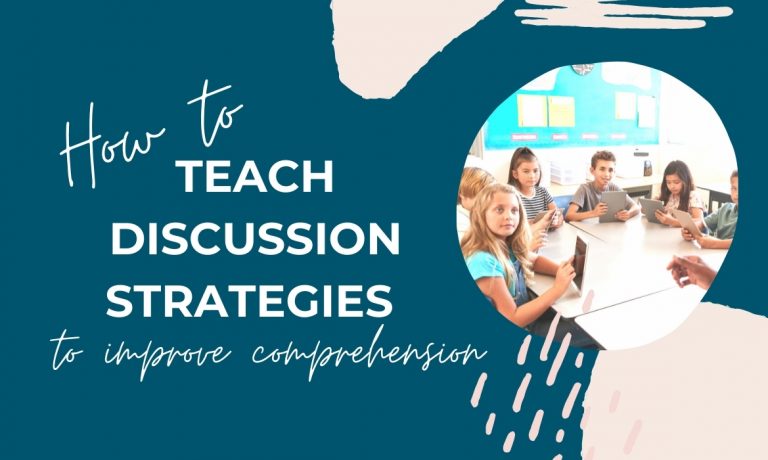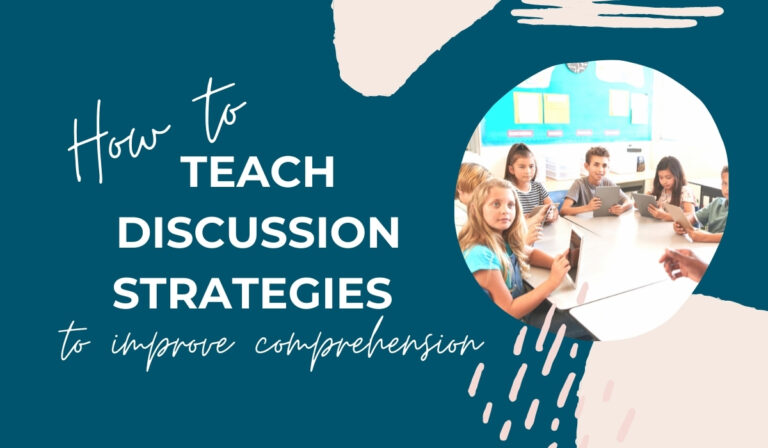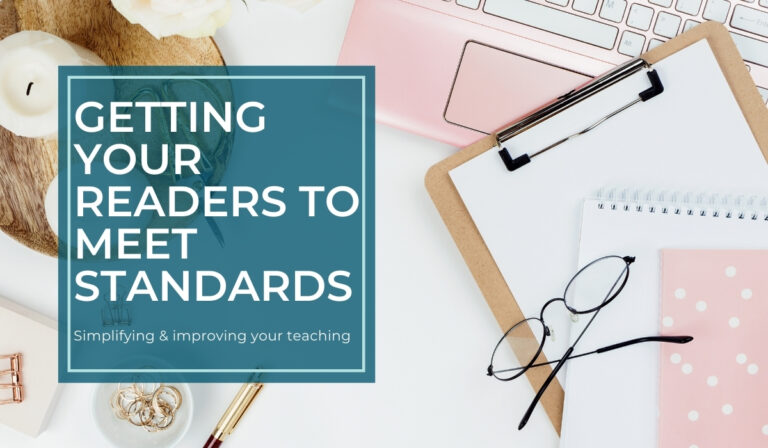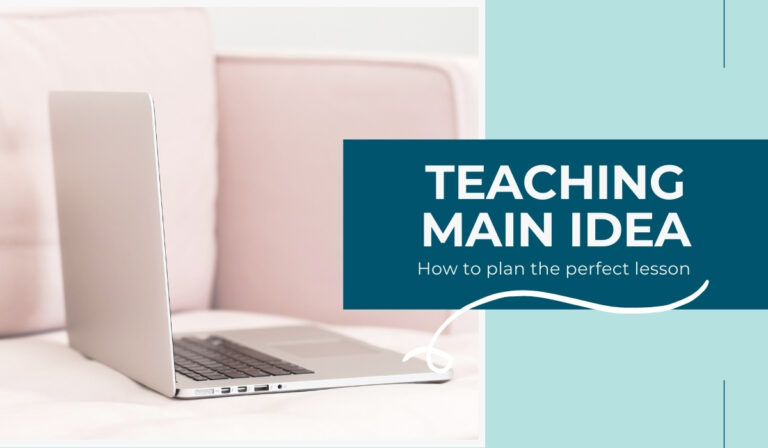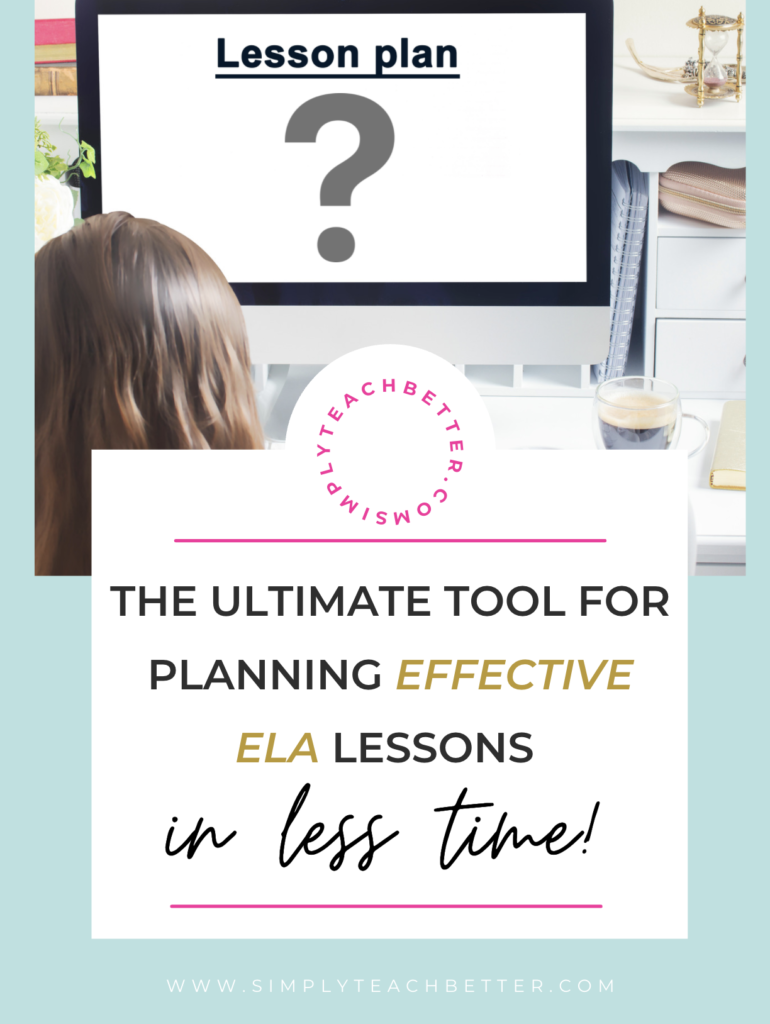Discussion strategies in the classroom
Do your students use discussion strategies in the classroom? If not, you NEED to!
Before we dive in, let me share a brief story that will show you why.
Imagine this: Your readers just finished Charlotte’s Web. You say, “Alright, let’s discuss. Who wants to start?”
One student says, “I think Charlotte’s babies will grow up and make friends on the farm.” Another student says, “I agree, but I think some will probably not live as long as Charlotte did.” Another student says, “I don’t agree with that statement….what’s your evidence?” The student responds with both text evidence and personal background knowledge.
And off they go. They’re holding a meaningful discussion about the text they just read WITHOUT YOU. This is not a fictional tale or a pipe dream. This was an actual account of an everyday occurrence in my 3rd grade classroom.
Teaching discussion strategies in the classroom will allow your students to develop independence, greater comprehension, collaboration, and so much more! As the teacher, you get an authentic assessment of their comprehension without having to prep or grade anything.
Is there anything better? I think not.
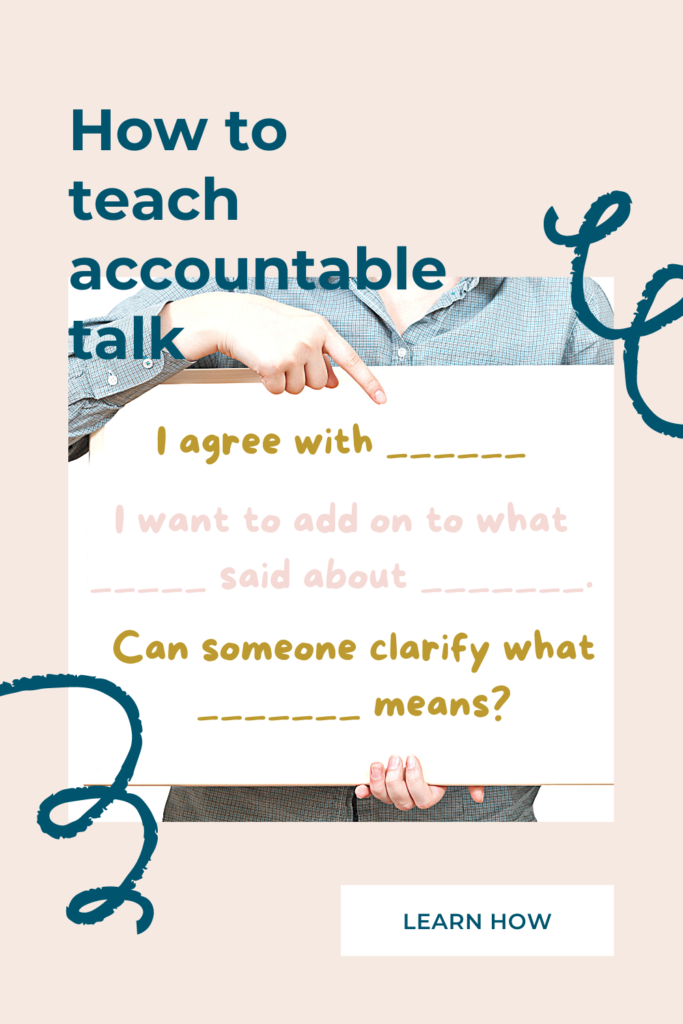
How to teach accountable talk
Meaningful discussion strategies in the classroom are often referred to as a method called accountable talk. It refers to teaching students how to raise the level of discussion when talking about text or other academic subjects. You can teach accountable talk discussion strategies to students of all grade levels starting in kindergarten. I suggest starting small (less is more) and building.
First, you’ll need to scaffold and model the accountable talk. Create sentence stems of short phrases based on the types of discussion interactions they will have. I suggest starting with these:
CONNECT STEMS:
- I agree with _____ because __________
- I want to add on to what ______________ said…
- I disagree with the idea that ______________ because _______________.
- I like what _____________________ said because _________________.
- I want to build on __________________…
- Can you tell me more about ______________________________?
QUESTIONS FOR EACH OTHER
- Can you clarify what you mean about __________?
- What’s your evidence for ________________?
- How did you figure that out?
- Can you give an example of ___________________?
- What page did you find _________________?
ABOUT THE TEXT
- I don’t understand why _____________.
- Why did the author ________________?
- This makes me think ________________…Does anyone agree?
- Something I noticed is _____________________.
- Can someone clarify what _______________ means?
After teaching and modeling how to use the sentence stems, you’ll want to put it into practice right away!
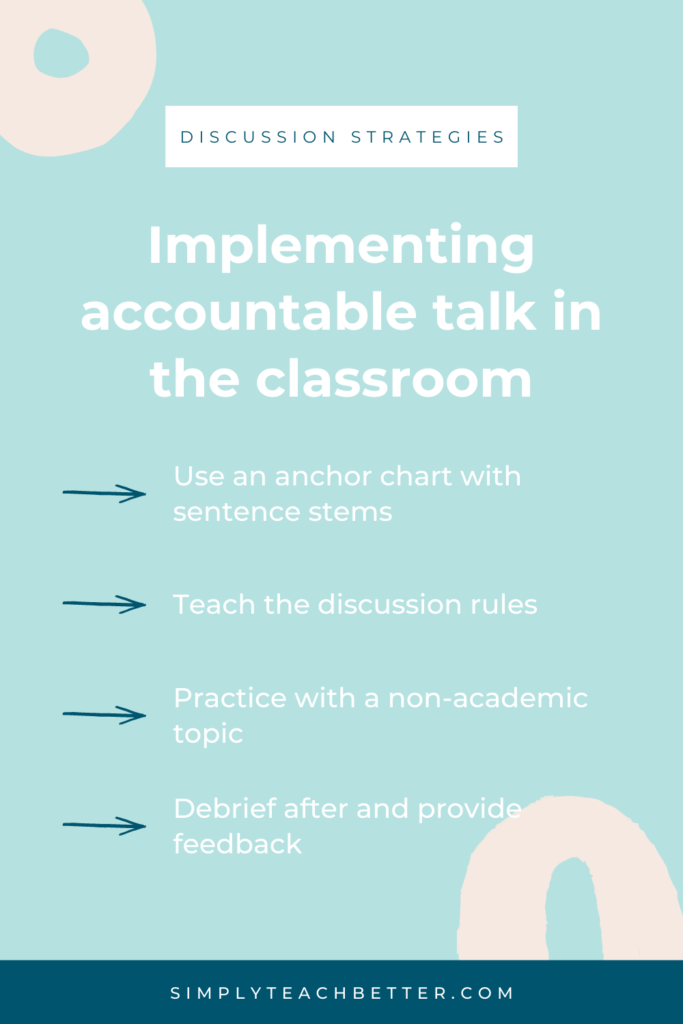
Implementing accountable talk in the classroom
The first time you try to hold an accountable talk discussion in the classroom, expect chaos! Expect it. Embrace it. Learn from it. (I say that, but I see you shaking your head- not in MY classroom…just trust me. It will be out of your comfort zone:)
First of all, make sure your sentence stems are displayed on an accountable talk anchor chart of some sort so students can refer to it for ideas. When you are first practicing using these discussion strategies in the classroom, start with a topic of interest to students like “Pizza is the best food” or “Recess should be shortened for more math time”. Topics like these will allow all students to participate comfortably because they do not have to have any academic knowledge to contribute. Plus, what student doesn’t like to talk about pizza or recess??
Before you start, tell the students there are 2 rules. Just 2. Here they are:
- There is no hand raising. You just speak. The teacher does not call on you. If 2 people start speaking at once, they make eye contact and decide who continues.
- You must connect to the previous speaker’s words before adding your own (see the “connect” stems). For example, if I want to ask a question I could say,
“I agree with what ______ (person before) said, but I’m also wondering about….” or
” I want to add on to what ______ (person before) said because ……” or
” I don’t agree with the idea that ______________ because I think …..” etc.
Holding your first accountable talk discussion
The best way to learn is by doing. Give the topic. Maybe pick one student to start by sharing their opinion of said topic. Allow the awkward silence as the kids stare at each other and think “Can I really just talk without raising my hand???” Seriously, it’s mind-blowing to them.
Then allow the outburst of talking and giggling to ensue as they all start talking at once. Hence, the chaos I referred to above. Remember, we’re embracing it. Stand back and see what happens. Notice what’s working and not working and what re-teaching/ modeling might need to happen. But just watch for now.
Next, allow the “discussion” to continue for a few minutes (or longer if it’s going well) and then stop them and debrief. Ask the students what went well and what didn’t. Point out the struggles you saw and redirect them to the rules and the sentence stems.
After the debrief, try it one more time with a different topic. You’ll be amazed at how much better this round goes!
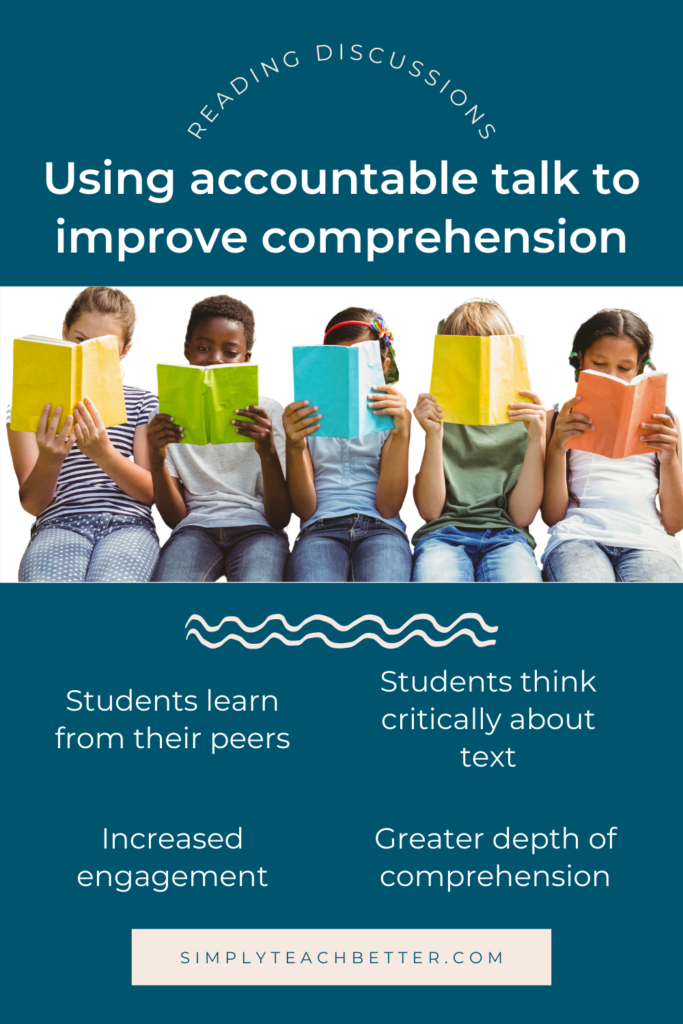
Using discussion strategies to improve comprehension
Ideally, you will practice these discussion strategies in the form of holding an accountable talk discussion many times before you apply the method to actual text. Students need many opportunities to feel comfortable conversing in this way with each other before you throw actual academic topics at them!
Once they’re comfortable with this type of discussion, allow them to discuss literature this way. After reading, start the discussion by posing a question and then simply say, “Let’s start a class discussion” (or whatever name for this method you came up with that’s fancier than mine).
The great thing about using accountable talk as a discussion strategy is that it deepens comprehension as the kids listen to each other’s ideas about the text as well as discuss their own. Talk about (pun intended) developing critical thinking and communication skills!
Above all, they learn far more in a discussion like this than answering comprehension questions about the text! Plus, as the teacher, you have a front row seat to the level of comprehension attained by the majority of your class. No extra prep or grading required!
It’s amazing to hear the information that’s shared and furthermore, how they hold their peers accountable for textual evidence among other things!
Finally, what about your kiddos that sit quietly and don’t participate in the discussion? Let them. They are learning from their peers, which is highly effective.
Wrapping up the discussion on discussion strategies
In conclusion, you need to teach discussion strategies in the classroom for many reasons, not the least being to improve critical thinking and comprehension.
Remember, expect chaos in the beginning! It’ll be ok, I promise. I am the champion of tight classroom management and if I can do it, so can you!
Additionally, developing readers means developing thinkers, communicators, and problem solvers. Using accountable talk in your classroom is a fabulous way to level up your reading instruction!
And if you wanna know more about improving comprehension, check out this post!


